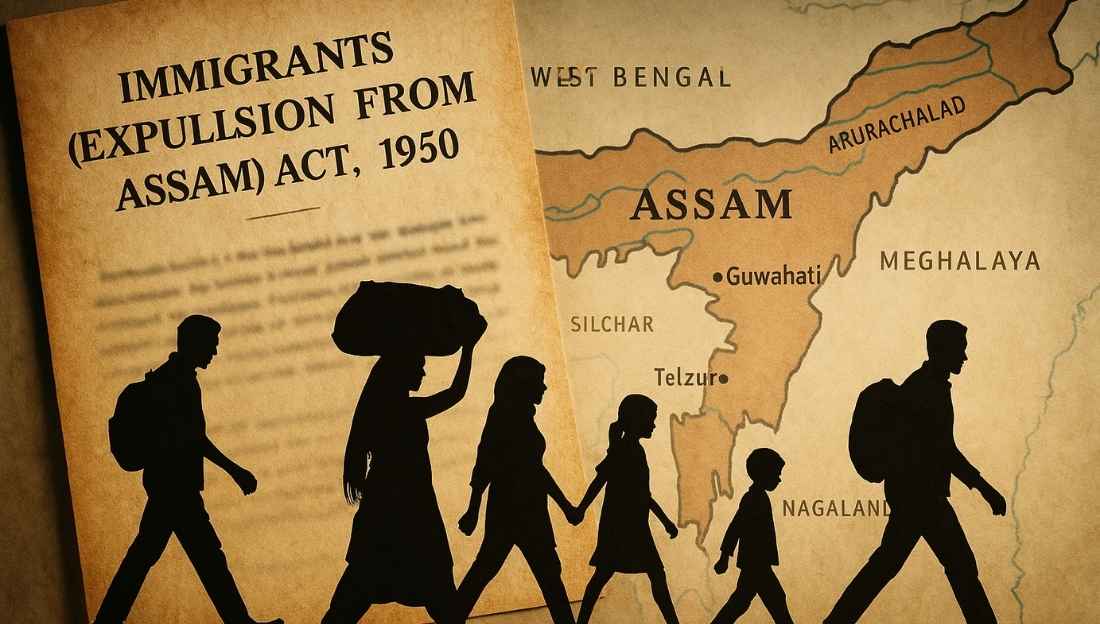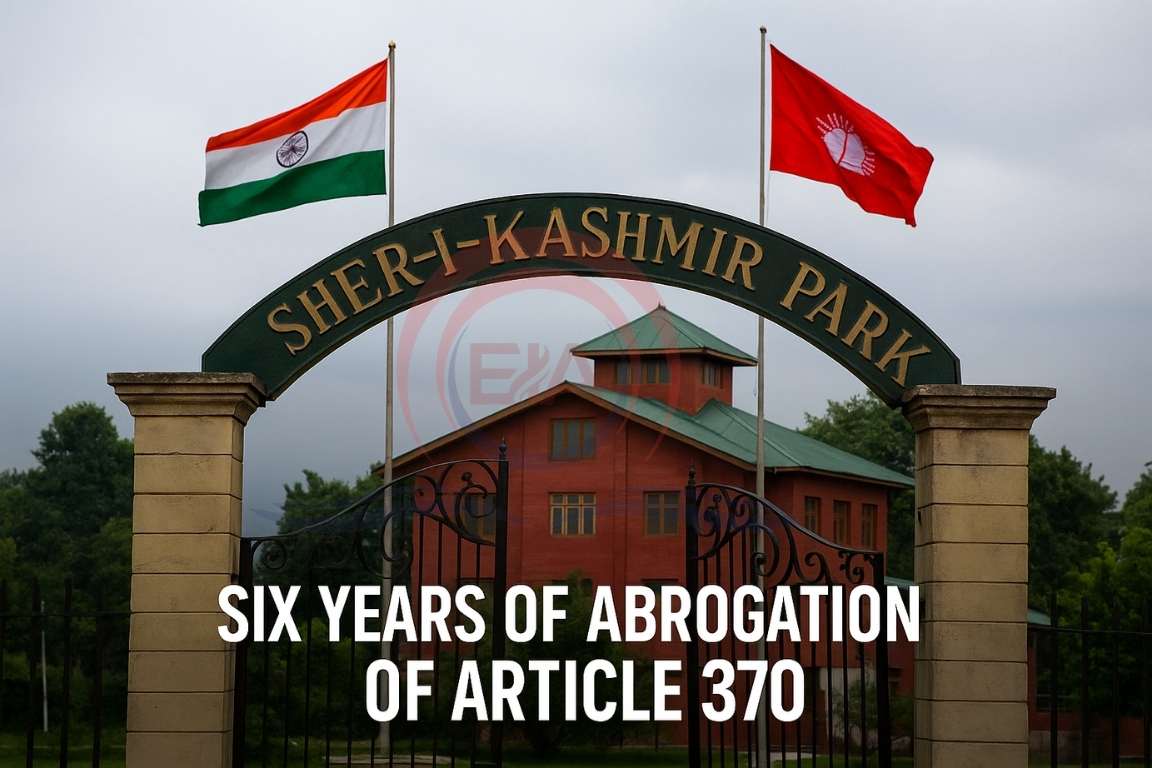Assam has, for the first time, used the Immigrants (Expulsion from Assam) Act, 1950 to issue deportation orders against five individuals declared “foreigners” by a tribunal. This is the Act’s first recorded use since its approval by the state cabinet.
Historical Background
- Enacted on 1 March 1950, this law was framed to control the increasing migration into Assam from East Pakistan after Partition.
- Assam was facing political, demographic, and ethnic tensions due to mass cross-border movement.
- Since citizenship is a Union subject, the Central government drafted the Act and delegated powers to Assam.

Purpose and Key Features of the Act
- The Act allows the Central Government to expel individuals from Assam who are:
- Normally residents outside India,
- Entered Assam before/after 1950,
- Considered harmful to public interest or to Scheduled Tribes in Assam.
- The law gives authorities power to order such individuals to remove themselves from Assam or India within a time limit, through a defined route.
- Officers of both the Union and Assam governments can enforce expulsion.
Refugee Exemption
- Understanding post-Partition humanitarian issues, the Act exempted refugees who migrated due to civil unrest or communal riots in Pakistan (later Bangladesh).
- This showed a balance between security concerns and humanitarian duty.
Difficulty in Identification
- During communal tensions in Lower Assam (1950), 40,000 to 1 lakh Muslims migrated to East Pakistan.
- Many original residents were mistakenly labeled immigrants, especially Assam’s Bengali Muslims.
Political Sensitivity
- A controversial case involved an Assamese Muslim being asked to leave, which drew strong objection from PM Jawaharlal Nehru.
- He believed that such harsh action during unstable times would harm communal harmony.
Nehru–Liaquat Pact (April 1950)
- A bilateral pact between India and Pakistan to protect minorities on both sides.
- Pakistan’s PM Liaquat Ali Khan raised concerns over Assam’s expulsion orders.
- Soon after, Nehru suspended the Act’s implementation.
End of Active Use
- On 10 April 1950, Nehru ordered the Assam CM to suspend all expulsions.
- The emphasis shifted to minority protection, peace, and stability.
- Historically, only a few hundred individuals were impacted before the Act was quietly sidelined.
1950 – Enactment of the Immigrants (Expulsion from Assam) Act
- This law was made to control illegal migration into Assam from East Pakistan (now Bangladesh) after Partition.
- It gave the Central Government power to remove foreigners whose presence was harmful to peace, public interest, or tribal areas.
- Refugees fleeing violence were not to be expelled under this Act.
1979–1985 – The Assam Movement
- A mass student-led protest in Assam.
- Main demand: identify, delete names, and deport illegal immigrants from Assam.
- People feared loss of jobs, land, culture, and identity due to migration.
- Led by All Assam Students’ Union (AASU).
1985 – Assam Accord Signed
- Peace agreement between Government of India and Assam Movement leaders.
- Key points:
- Foreigners who entered after 24 March 1971 to be detected and deported.
- Protect Assamese people’s culture, identity, and language.
- Promised development and safety for local communities.
2015 – Supreme Court Ruling on the Act
- The Supreme Court said the 1966 and 1971 cut-off rules (from Assam Accord) must be followed strictly.
- It ordered the government to speed up detection and deportation of illegal immigrants.
- Stressed the need to protect Assam’s demographics and national security.
Conclusion
The Immigrants (Expulsion from Assam) Act, 1950 reflected early attempts at regulating migration in Assam. However, due to political sensitivity, humanitarian concerns, and challenges in identifying genuine citizens, the law remained largely unused. Its recent revival shows Assam’s continuing struggle with migration, citizenship, and identity.
This topic is available in detail on our main website.





